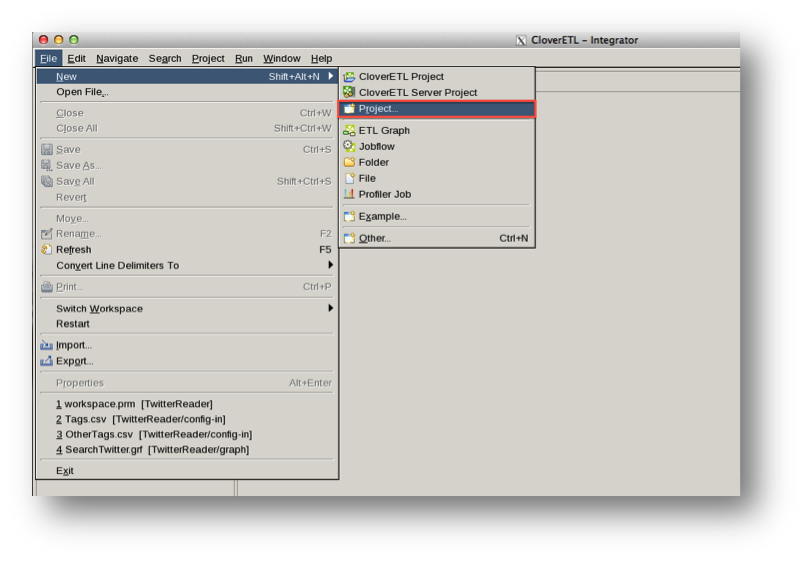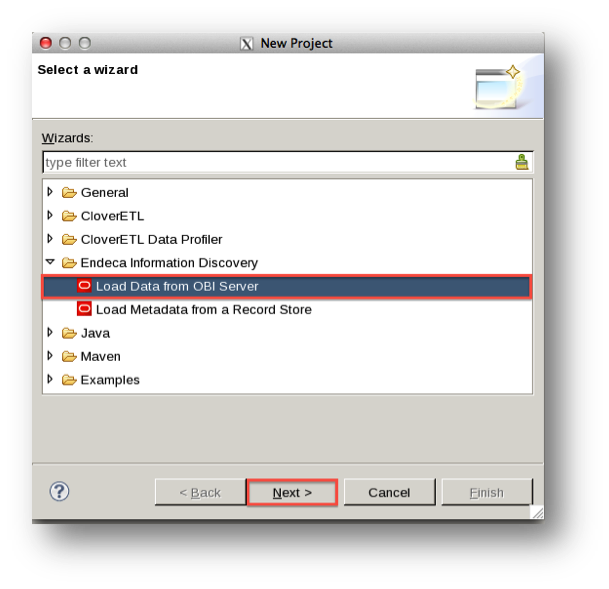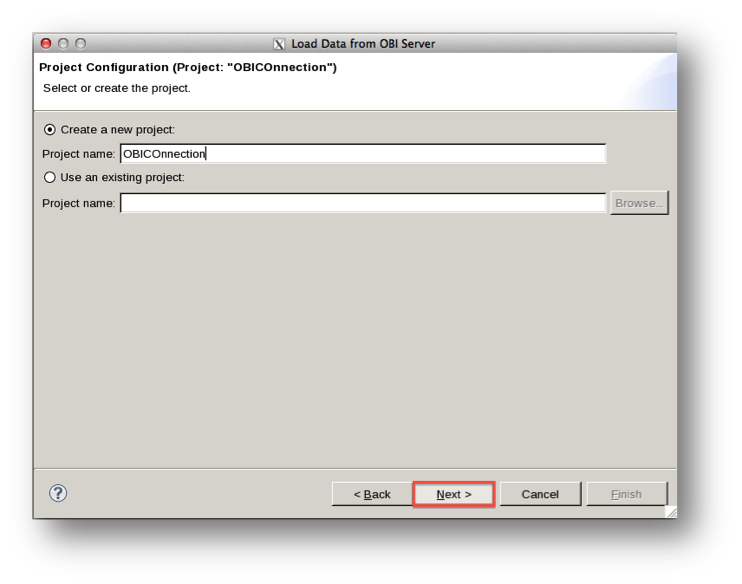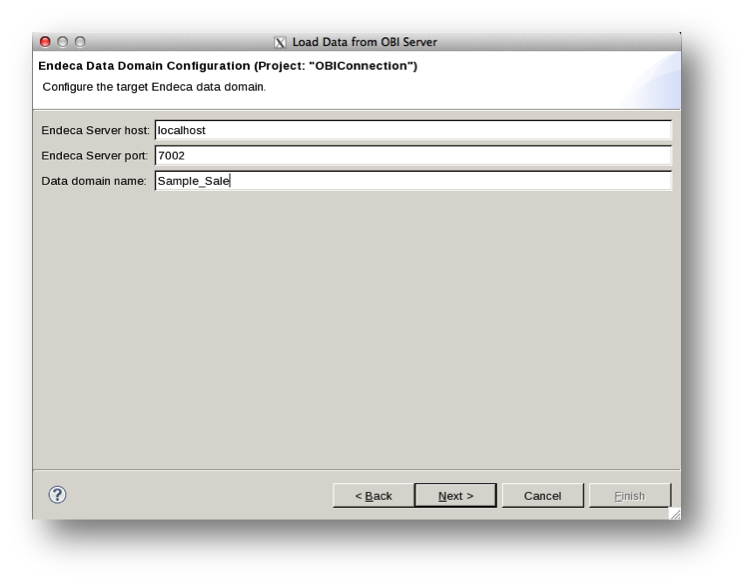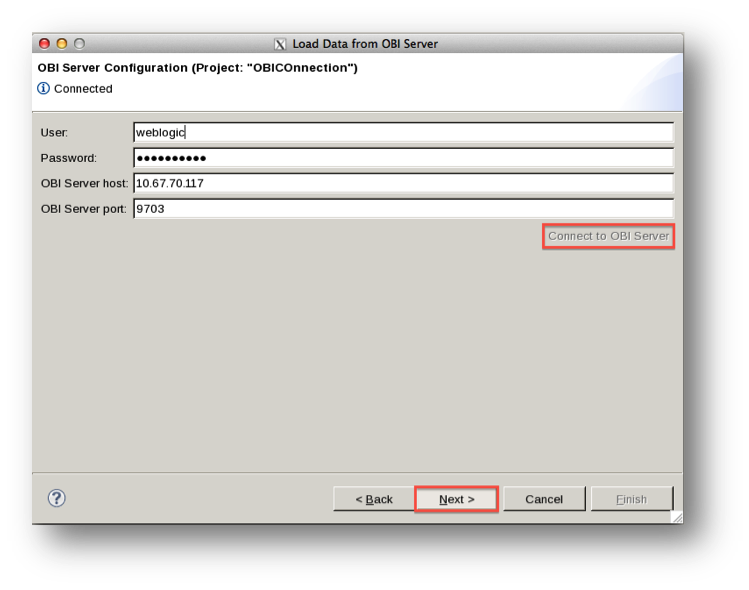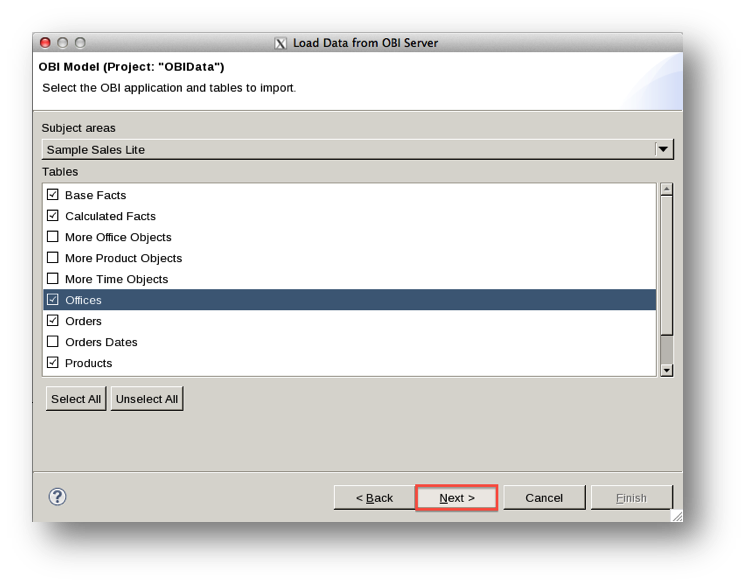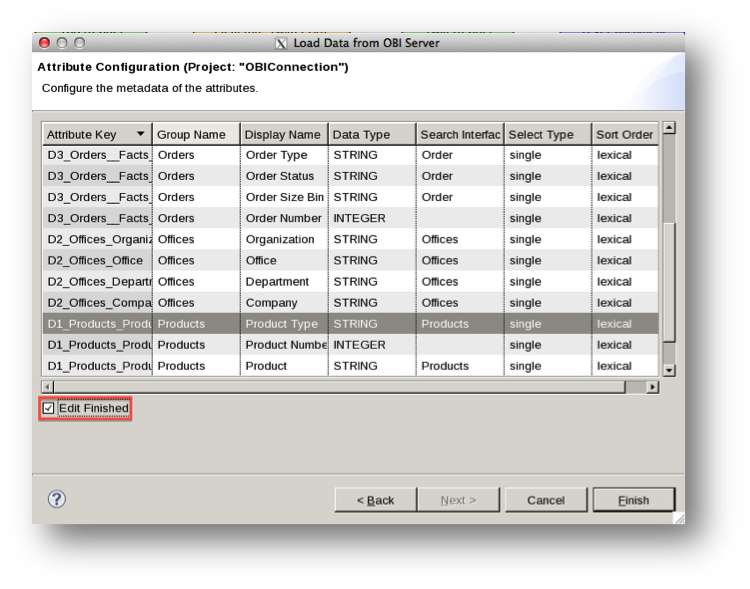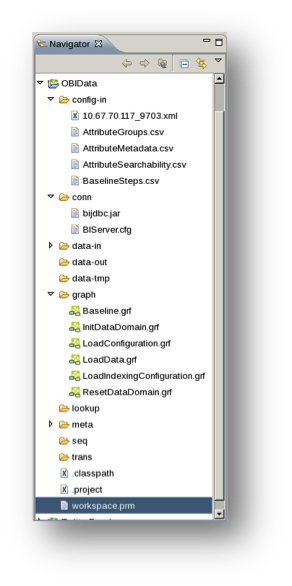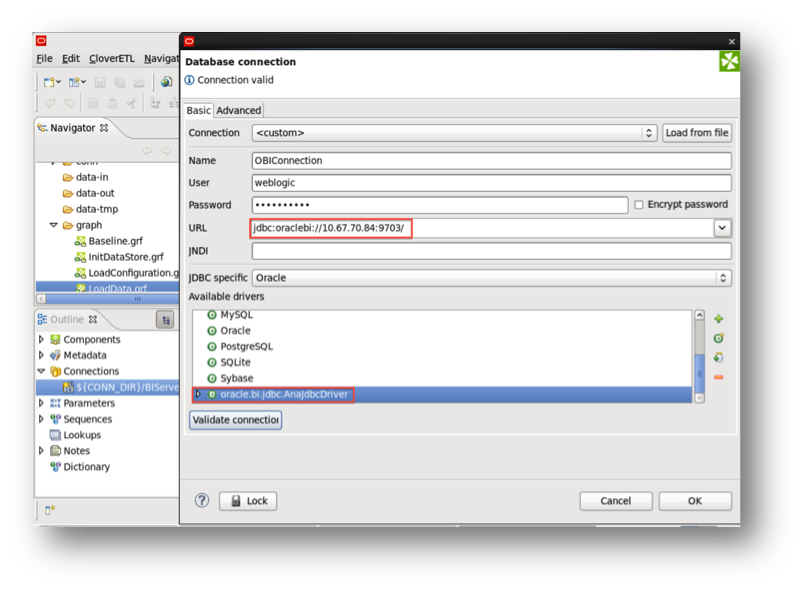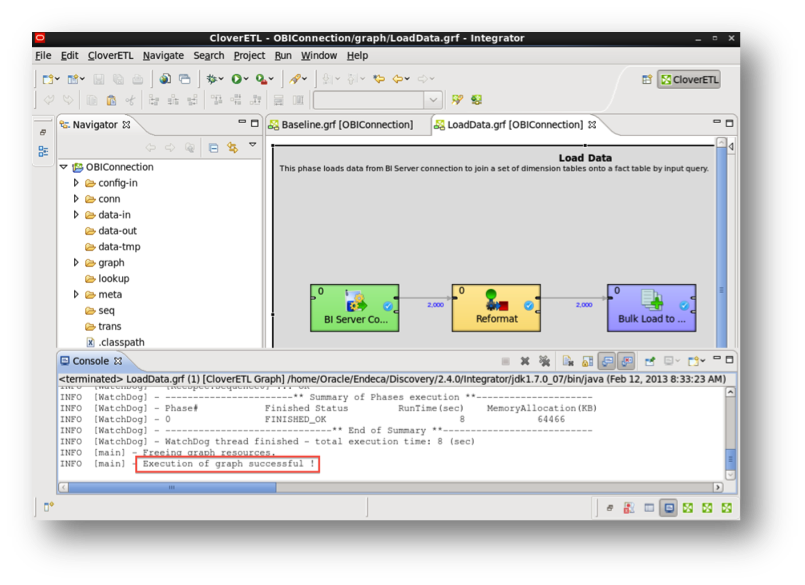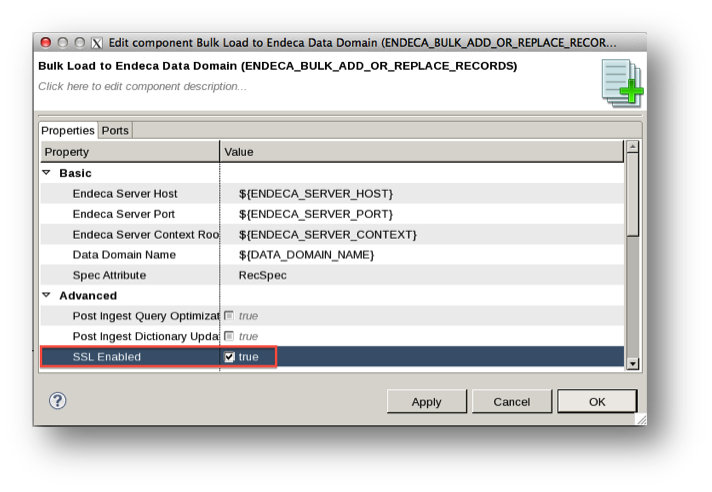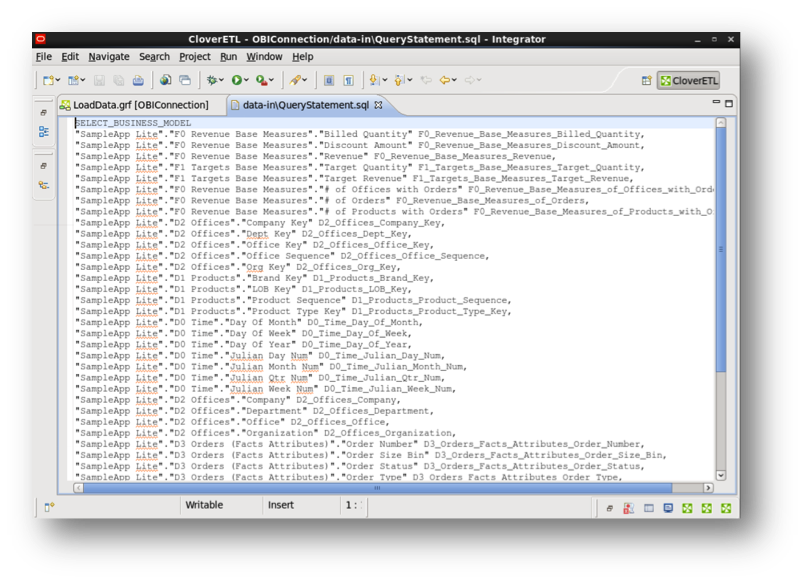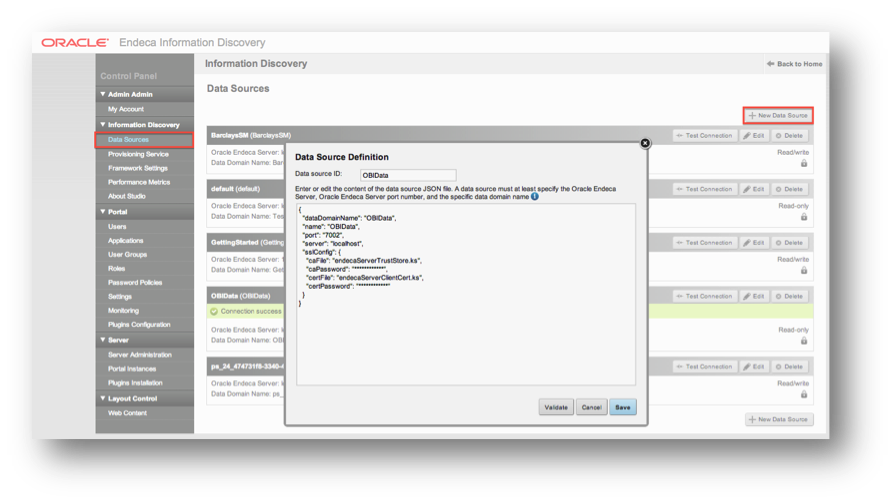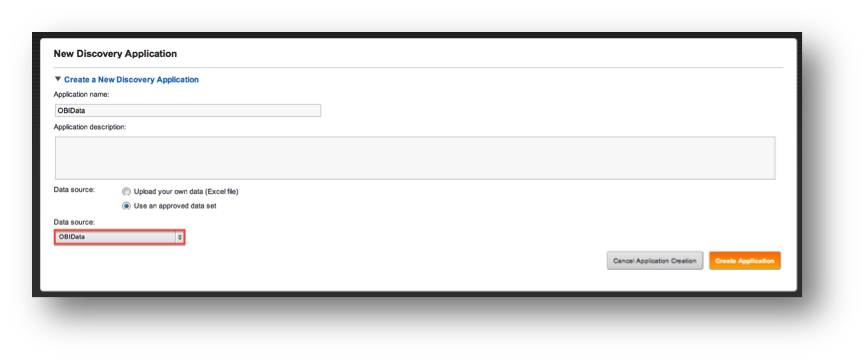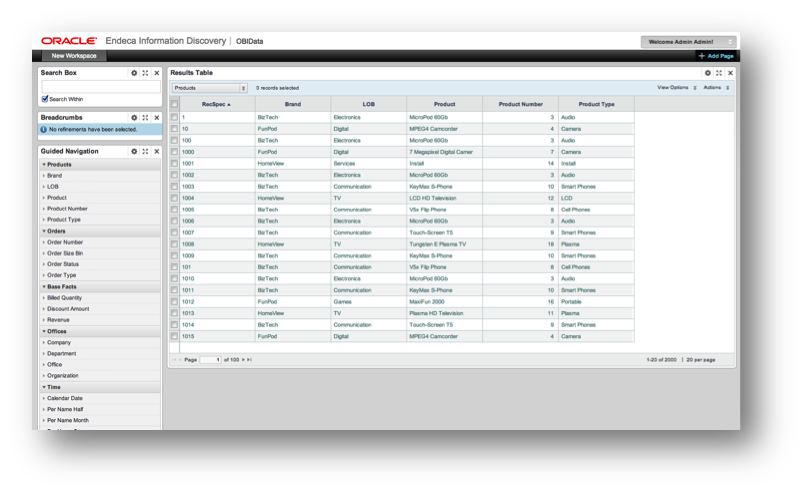Oracle Endeca Information Discovery v3.0 Integration with the OBIEE 11g BI Server
One of the first moves towards integrating Oracle Endeca Information Discovery (OEID) with other Oracle products is the ability to source data from an Oracle BI Server repository for loading into an Oracle Endeca Server “data domain” (the new name for an Endeca Server datastore). As mentioned in my previous post, this functionality was initially introduced in OEID version 2.4 and works much the same in the new version 3.0.
This feature is based around Oracle Endeca Integrator Designer (“Integrator” for short), the client part of Integrator Suit that is used to design data loading graphs and optionally run them, and uses a “template project” which allows users to connect to an Oracle BI Server, run a select-query and then load repository data into an Endeca Server data domain. Some data domain attribute and indexing settings will also be configured, so that guided navigation and attribute/record search within Endeca Studio are set up for users looking to analyze the data we’re loading.
Two different scenarios come to mind that could make use of this feature. First, you might want to join some modeled data from your Oracle BI Server with other data that you have stored in Endeca Server; for example, allowing you to combine and analysis unstructured and structured data. In other words, you can create dashboards on your unstructured data that has been enriched by some descriptive structured data!
The second use case could be if you wanted to create some quick dashboards against data modeled within the BI Server repository, to find answers to new questions without the need to make extensive changes within the actual BI Repository - in other words, to carry out information discovery!
There are probably other use cases too, but whatever the reason you need to bring data from Oracle BI server to Integrator has made this very easy. In this post, therefore, I’m going to provide a step-by-step guide on how to setup this particular functionality, and load data from the OBI Server repository to the Oracle Endeca Server using the 3.0 release of OEID.
- Firstly, open Integrator and select File > New > Project from the menu bar.
Note that with the earlier 2.4 release of Integrator, you had to make sure that a .jar plug-in file (found inside the installation package) for connecting to the Oracle BI Server had been installed in order to be able to see the “Load data from Oracle BI Server” wizard under Information Discovery category in the New Project displayed dialog. This step is not required for version 3.0. Click Load Data from OBI Server and press Next to proceed.
- The Load Data from OBI Server wizard should be displayed. On the first page, enter the project name you are creating (for example, OBIConnection) or alternatively you can Use an existing project. In which case, after pressing Next again, the wizard will add new files to the project you have. I would suggest creating a new project to prevent any conflict, as you can always load the data into an existing data domain.
- Next, In the Endeca Data Domain Configuration page, provide your up and running Endeca Server details and press Next to continue, for example:
Endeca Server Host: localhost
Endeca Server Port: 7002
Data Domain Name: Sample_Sales
The data domain name that you provide will be used to create a data domain as one of the initial steps of the Integrator project in a graph called “InitDataDomain.grf”.
Note, where the Endeca Server has been installed on a secure mode, you need to provide the ssl-listen port.
- Now you’ll need to enter the OBI Server connection details such as User, Password, OBI Server host and OBI Server port; For example:
User: Weblogic
Password: Password01
OBI Server host: 10.67.70.117
OBI Server port: 9703
9703 is the port that I could connect to. You should validate the credentials by Connecting to OBI Server and once you see the Connected message on the top of the dialog, proceed to the Next step.
- You are now able to choose the repository you want and select the relevant objects/tables you need from the list of Tables by checking them. Press Next to continue.
- The wizard will automatically prepare the required meta-data information for the attributes that you selected. Using this page, you can configure some OEID features such as Search Interface by editing the displayed values (Note that this property is only available for STRING attributes). Check the Edit Finished box (located towards the bottom left of the window) when you are happy with all configurations and then click Finish.
- Having now finished the wizard, a new project with all the configurations, metadata files, connection, SQL statement and graphs required to connect to the OBI Server will be added to the Navigator pane.
8. You can now see the required database connection, as shown in the screen shot below, where the Oracle JDBC driver has been used.
- It’s now time to run the Baseline graph in order to load the OBI Server repository data into the Oracle Endeca Data Domain. Expand the Graph folder within Navigator pane and open Baseline.grf. Press the green Run button from the toolbar. Check the Console to see Execution of graph successful.
Some graph components may require SSL configuration, if you are using a secure Endeca Server implementation; For example in the Load_Data graph, the Bulk_Add/Replace component has a SSL Enabled property that should be updated to true. Also, you’ll also need to change all http requests to https.
The “Load Data” graph uses a Query-Statement, which is located in the data-in directory and contains a SELECT statement from OBI Server repository objects.
- Now its time to log into Endeca Studio and create a Data Source in the Control Panel pointing to the data domain you created in the Integrator project.
Test connection to ensure that it is working properly.
11. One more change in OEID version 3.0 is that the old ‘Liferay portal’ term ‘Community’ has been updated to ‘Application’, which to me, feels more related to the subject of Information Discovery and thus makes sense, but that’s just a personal opinion. An ‘Application’ refers to a subject area where users can create different dashboards on different views of one and only one data-source. Being in the home page of Oracle Endeca Studio, select New Application using the approved, newly created and validated data-source.
- OEID version 3.0 kindly, generously and automatically generates a new dashboard with all the required components such as a searchbox, a breadcrumb, a guided navigation and of course a results table.
So far we have created an Oracle Endeca Information Discovery dashboard upon our Oracle BI Server repository, but what is the advantage of doing this? Rather than being able to create reports very quickly, Perhaps joining some unstructured data from other data-sources to the Oracle BI Server repository and a bit of Text tagging, enrichment and salience analysis could be done in Integrator and will make the dashboards much more interesting.
Good luck to those of you trying this out. Look out for my next post where I’ll explain how to read from Endeca Server and join its data to those coming from other sources.

